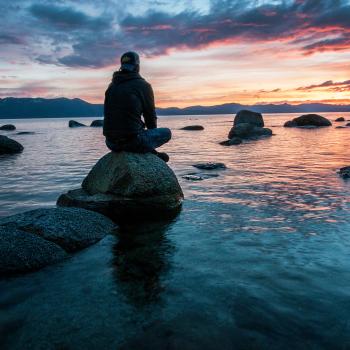We don’t like to think about death. This can be especially true as we grow older and begin to realize we only have a finite amount of time left on Earth. So when you’re forced to look death in the face every day, it can be a jarring experience. Or depending on your perspective, an invigorating one. I fall into the latter category.
The picture at the top of this page is the view I woke up to every morning at a house we rented in Key West last month. It’s taken from the kitchen window, just above the sink, where I would gulp down my morning vitamins and pour my first cup of coffee. It’s the Key West Cemetery and the only thing separating it and me was a narrow one-way lane.
The Key West Cemetery is a place many tourists like to visit.
According to the history books, the cemetery was established in 1847 on “high ground, 16 feet above sea level” in Key West. This was after the disastrous hurricane of 1846, when a beach-front cemetery was unceremoniously uprooted by strong winds and high seas. As Bonnie Gross reports at FloridaRambler.com, “as a result, the oldest gravestones in this cemetery are actually older than the cemetery itself. They date to 1829 and 1843 and were moved here after the hurricane.”
It’s estimated that within the fenced 19 acres of the cemetery property lie nearly 100,000 people. Astonishing, when you consider there are only a little over 25,00 full-time residents living in Key West now. It’s a huge cemetery for an island that’s only 4 miles long and a mile wide. I can vouch for Gross’s description of the place:
The cemetery is like a town of narrow streets: Instead of houses there are rows of whitewashed rectangular boxes; instead of people there are chickens and iguanas. It is weedy and overgrown with a forlorn air of a forgotten place.
I should also mention that the cemetery is supposedly haunted. It’s a featured stop on the Key West “Ghosts and Gravestones” trolley tour. Gross points out there have been many reports of ghosts being spotted in the cemetery over the years. The most commonly sighted ghost is a Bahamian woman who approaches visitors who sit on graves or behave disrespectfully. But there are also reports of:
- The ghost of a woman in white who is seen walking through the cemetery.
- The ghost of a young boy who was killed in a car accident.
- The ghost of a pirate who is said to haunt the cemetery at night.
Are the spirits of the deceased still hanging out at the cemetery?
It’s possible. In the novel Lincoln in the Bardo, George Saunders writes that many of the dead have difficulty leaving this earth. They are still present in what’s called “the Bardo,” a transitional space between life and death. They hang around the cemetery, in this case Oak Hill Cemetery in Georgetown, some oblivious to the fact they have died. Others are afraid to move on to the next stage of their journey, so stubbornly hang on to the remnants of life that remain. Some even have the ability to interact with the living.
Lincoln in the Bardo was frequently in my head as I looked out on or jogged through the cemetery. How many spirits were still hanging present? Were any trying to reach out to me? If they were, I did not sense them. But it was still hard to escape the sense of a presence there, the feeling that there might be only a thin veil that separates the living from the dead.
There are benefits to thinking about death. (Really.)
Death was never too far from my mind during my stay in Key West. I was reminded of it before I had my first sip of coffee each day. And as reported in Arnold Schwarzenegger’s Pump Daily newsletter, thinking about death may actually benefit us, by helping increase our happiness and gratitude. From the story:
A study in ‘Psychological Science’ discovered that people who thought about their death were more empathetic and more likely to donate their time, money, and even their blood. And researchers from Kentucky found that thinking about death can increase fulfillment.
As one of the newsletter writers points out, “part of life is learning to cope with disappointment, doubt, and death.” And when it comes to death, the best way to deal with it may be to confront it head on. When you realize that death is an inevitable part of life, you begin to appreciate the limited time you have here. It helps you become more present and feel more grateful about the good things in life that surround you now.
It brings to mind the Stoic philosophy memento mori. Translation: Remember you are going to die. This is the only real certainty about our collective futures—and we don’t know when our own deaths will happen. For this reason, the podcaster Aubrey Marcus points out that “time is our most precious resource.” This helps us become better focused on what is real and important in our lives. It’s a reminder I had each day in Key West—and still carry with me today, weeks after my vacation is over.











